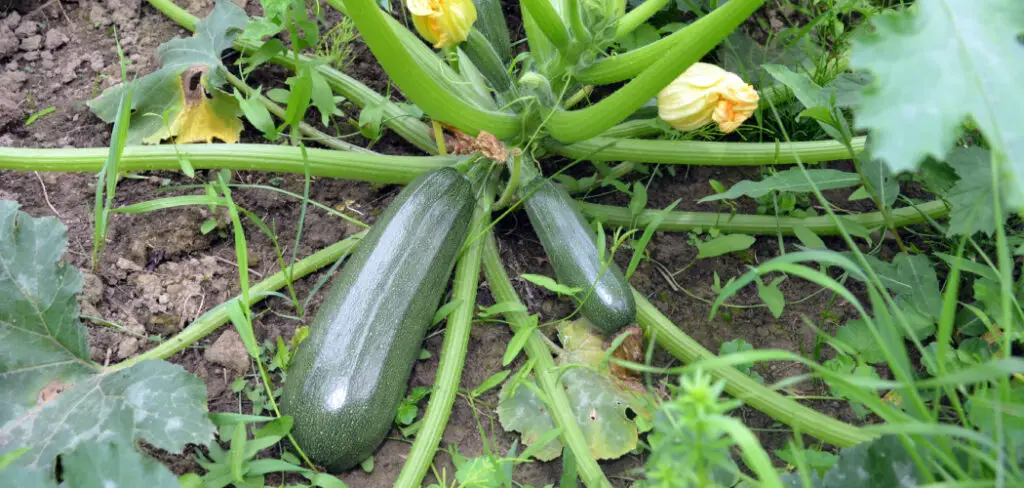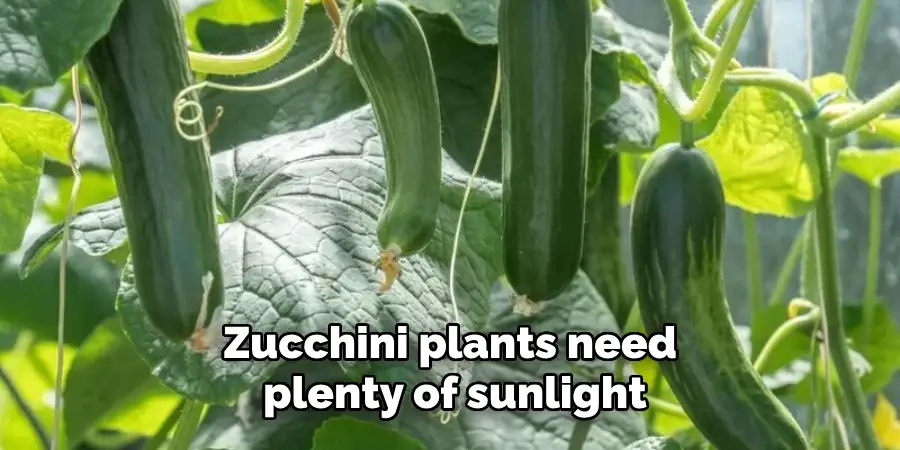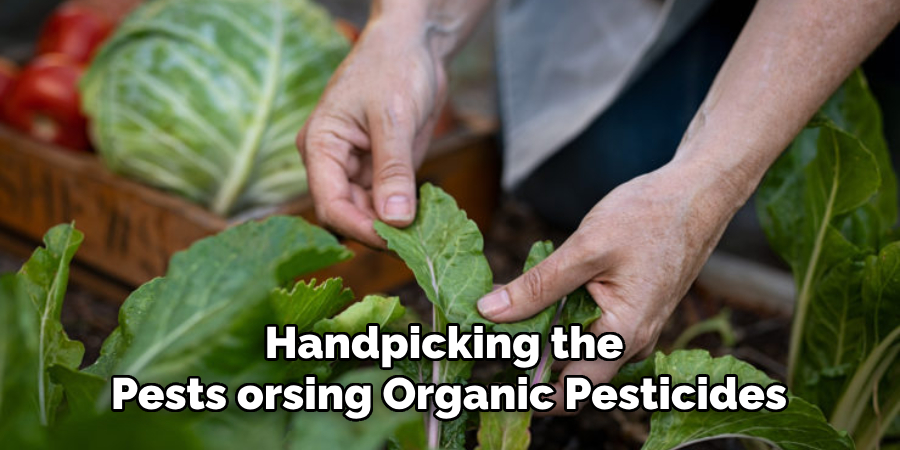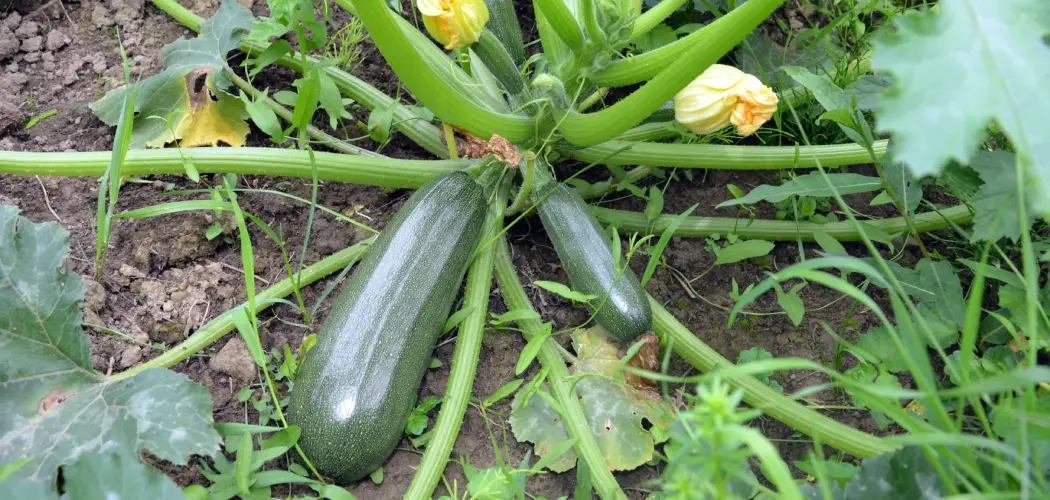Are you an avid home gardener looking for a new challenge? Have you become bored with tending to the same old flowers and vegetables in your garden year after year? If so, then why not try something fun and unique: growing zucchini vertically? Vertical gardening is both a practical way of maximizing limited outdoor space and a rewarding hobby that will leave you feeling satisfied when harvesting an abundant crop.

Growing vertically is a great way to free up more garden space and, most importantly, produce larger fruits! With the right knowledge and supplies, you can easily grow an abundance of delicious zucchinis by taking advantage of vertical growing techniques.
Here, we’ll explore how to grow zucchini vertically. Read on for some valuable tips so that you can get started growing deliciously fresh zucchini straight from your own backyard!
Why May You Want to Grow Zucchini Vertically?
1 . To Save Space
Growing zucchini vertically can help you make the most of your limited gardening space. By growing them upwards on a trellis or fence, you can free up valuable ground space for other plants. This is especially useful for those with smaller gardens or limited planting areas.
2 . Better Airflow and Sunlight
Zucchini plants need plenty of sunlight and good air circulation to grow and produce healthy fruits. By growing them vertically, you can provide better airflow and sunlight exposure for the entire plant, leading to stronger and healthier crops.

3 . Reduced Risk of Diseases
When zucchini plants are grown horizontally on the ground, they are more susceptible to diseases such as powdery mildew. This is because the leaves tend to stay damp longer and are more prone to fungal growth. Growing them vertically helps keep the leaves drier, reducing the risk of diseases.
4 . Easier Harvesting
Harvesting zucchini can be a hassle when they are planted on the ground as you may have to bend down or crawl through plants to find and pick ripe fruits. Growing them vertically makes it easier to spot and harvest ripe zucchini, saving you time and effort.
5 . Aesthetically Pleasing
Lastly, growing zucchini vertically can add a unique and visually appealing element to your garden. The vines climbing up a trellis or fence can create a beautiful green backdrop for your other plants, making your garden more attractive.
How to Grow Zucchini Vertically in 5 Easy Steps
Step 1: Choose the Right Location
When growing zucchini vertically, it is important to choose a location that receives at least 6-8 hours of sunlight per day. This will ensure that your zucchini plants get enough light for proper growth and production.
Step 2: Prepare the Soil
Zucchini thrive in well-draining soil with plenty of organic matter. Before planting, add compost or aged manure to the soil to provide essential nutrients for your plants.
Step 3: Set Up a Support Structure
To grow zucchini vertically, you will need some sort of support structure such as a trellis, cage, or stake. This will prevent the vines from sprawling on the ground and keep them upright as they grow.
Step 4: Plant Your Zucchini
Plant your zucchini seeds or seedlings at the base of the support structure, following the spacing instructions on the seed packet. Make sure to water them well after planting. Also, remember to water your plants regularly to ensure they don’t dry out.
Step 5: Train the Vines

As your zucchini plants start to grow, gently train the vines to wrap around the support structure. This will help them grow vertically and prevent them from sprawling on the ground. You can also tie them with soft twine or plant ties for additional support.
Some Extra Tips to Grow Zucchini Vertically
1 . Choose Compact Varieties
When choosing zucchini varieties, opt for compact ones as they are more suitable for vertical growing. Some good options include ‘Black Beauty’, ‘Raven’, and ‘Costata Romanesco’.
2. Harvest Regularly
Make sure to harvest your zucchini regularly once they reach a size of about six inches. This will not only ensure that you have a steady supply of zucchini but will also prevent the plants from becoming too heavy and stressing the support structure.
3. Provide Adequate Water and Nutrients
Zucchini plants require consistent watering, especially during hot weather. Mulching the soil around your plants can help retain moisture and reduce watering frequency. Additionally, make sure to fertilize your zucchini plants regularly to ensure healthy growth and production.
4. Keep an Eye Out for Pests and Diseases
Like any other plant, zucchini is susceptible to pests and diseases. Regularly check your plants for signs of damage or infestation and take appropriate measures if needed. Adding companion plants like marigolds or nasturtiums can also help deter pests.
Frequently Asked Questions
What Precautions Do I Need to Take When Growing Zucchini Vertically?
When growing zucchini vertically, there are a few precautions that you need to take. First and foremost, make sure that the structure you use to support your zucchini plants is sturdy enough to hold the weight of the plant and its fruits. This is especially important when using trellises or cages.
Additionally, it is important to regularly check and adjust the supports as the zucchini plants grow. This will ensure that the plants have proper support and prevent them from bending or breaking under their own weight.

Moreover, it is recommended to use good quality soil with plenty of nutrients for your zucchini plants to thrive. You may also consider using organic fertilizers to provide essential nutrients to your plants.
Can I Grow Zucchini Vertically in Containers?
Yes, you can definitely grow zucchini vertically in containers. In fact, growing zucchini vertically in containers is a great option for those with limited space or who want to have more control over the soil and nutrients their plants are receiving.
Make sure to choose a large enough container that can accommodate the root system of your zucchini plants and provide proper drainage. Also, regularly monitor the soil moisture levels to ensure that your plants are getting enough water.
How Many Plants Can I Grow in a Vertical Zucchini Garden?
The number of plants you can grow in a vertical zucchini garden depends on the size and strength of your support structure, as well as the amount of space available. However, it is generally recommended to grow one plant per square foot of space in your vertical garden. This will ensure that the plants have enough room to grow and receive adequate sunlight and nutrients.
When Is the Best Time to Plant Zucchini?
Zucchini plants thrive in warmer temperatures, so it is best to plant them after the last frost has passed. In most regions, this typically falls between late spring and early summer.
However, if you are starting your zucchini plants from seeds indoors, you can start them a few weeks before the last frost date and transplant them into your garden once the weather warms up.
How Often Should I Water My Vertical Zucchini Plants?
Zucchini plants require regular watering to thrive, especially during hot summer months. It is important to keep the soil consistently moist, but not waterlogged. This means watering your plants deeply once or twice a week, rather than lightly every day. However, it is always best to monitor the moisture levels of your soil and adjust your watering schedule accordingly.
Are There Any Pests or Diseases That I Should Be Aware of When Growing Zucchini Vertically?
Zucchini plants are generally low maintenance and not prone to many pests or diseases. However, some common pests that may affect zucchini plants include squash bugs, cucumber beetles, and vine borers.
To prevent these pests from damaging your plants, regularly inspect your zucchini plants and take necessary measures such as handpicking the pests or using organic pesticides. Additionally, practicing good garden hygiene and avoiding over-crowding of plants can also help prevent diseases.

If you do spot any signs of disease, it is best to remove the affected plants immediately to prevent it from spreading to other plants. So, when growing zucchini vertically, be sure to keep an eye out for these potential threats and take necessary precautions to protect your plants.
Can I Grow Zucchini Vertically in Any Climate?
Zucchini plants thrive in warm and sunny climates, but can also be grown successfully in cooler regions. If you live in a colder climate, it is best to start your zucchini plants indoors and transplant them outside once the weather warms up.
However, if you have a greenhouse or a well-protected outdoor space, you may be able to grow zucchini vertically year-round. Just make sure to provide adequate warmth and light for your plants to thrive.
Conclusion
With the right strategy and preparation, you can successfully grow zucchini vertically in your own backyard. From using stake supports to trellises, use the method that works best for you to ensure that your garden is tidy and productive.
Now you know how to grow zucchini vertically! Growing zucchini vertically also has aesthetic benefits, allowing you to create eye-catching displays in your garden or yard. It’s time to take your green thumb to the next level – take on the challenge of vertical zucchini growing today!
About
Outdoor Fixes is a distinguished figure in the world of Diy design, with a decade of expertise creating innovative and sustainable Diy solutions.
His professional focus lies in merging traditional craftsmanship with modern manufacturing techniques,
fostering designs that are both practical and environmentally conscious. As the author of diy,
outdoorfixes delves into the art and science of outdoorfixes-making, inspiring artisans and industry professionals alike.
Education RMIT University
(Melbourne, Australia) Associate Degree in Design (Outdoor Fixes) Focus on sustainable design, industry-driven projects,
and practical craftsmanship. Gained hands-on experience with traditional and digital manufacturing tools, such as CAD and CNC software.
Nottingham Trent University
(United Kingdom) Bachelor’s in outdoorfixes.com and Product Design (Honors) Specialized in product design with a focus on blending creativity with production
techniques. Participated in industry projects, working with companies like John Lewis and Vitsoe to gain real-world insights.
Publications and Impact
In diy, Outdoor Fixes his insights on indoor design processes, materials, and strategies for efficient production.
His writing bridges the gap between artisan knowledge and modern industry needs, making it a must-read for both budding designers and seasoned professionals.

